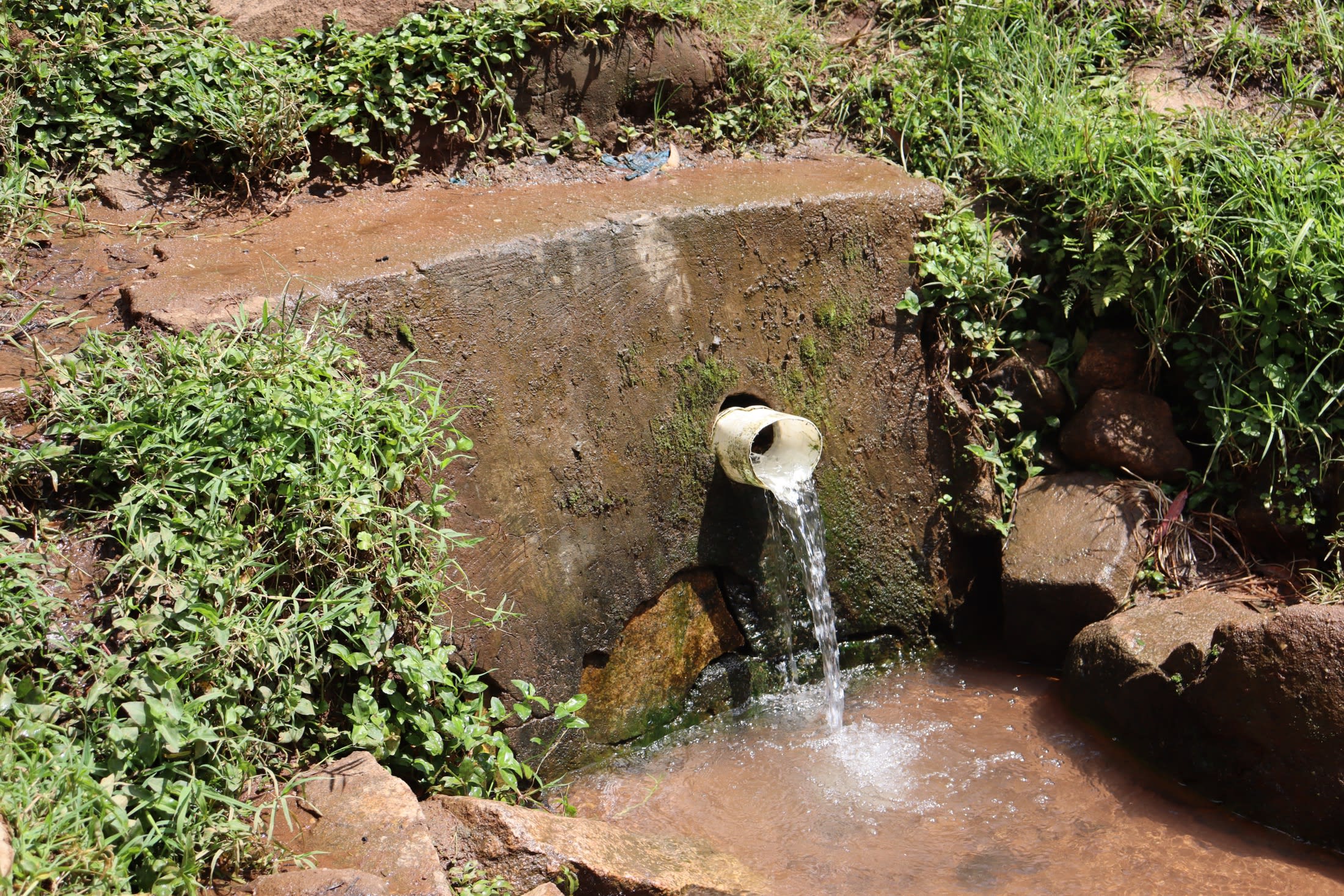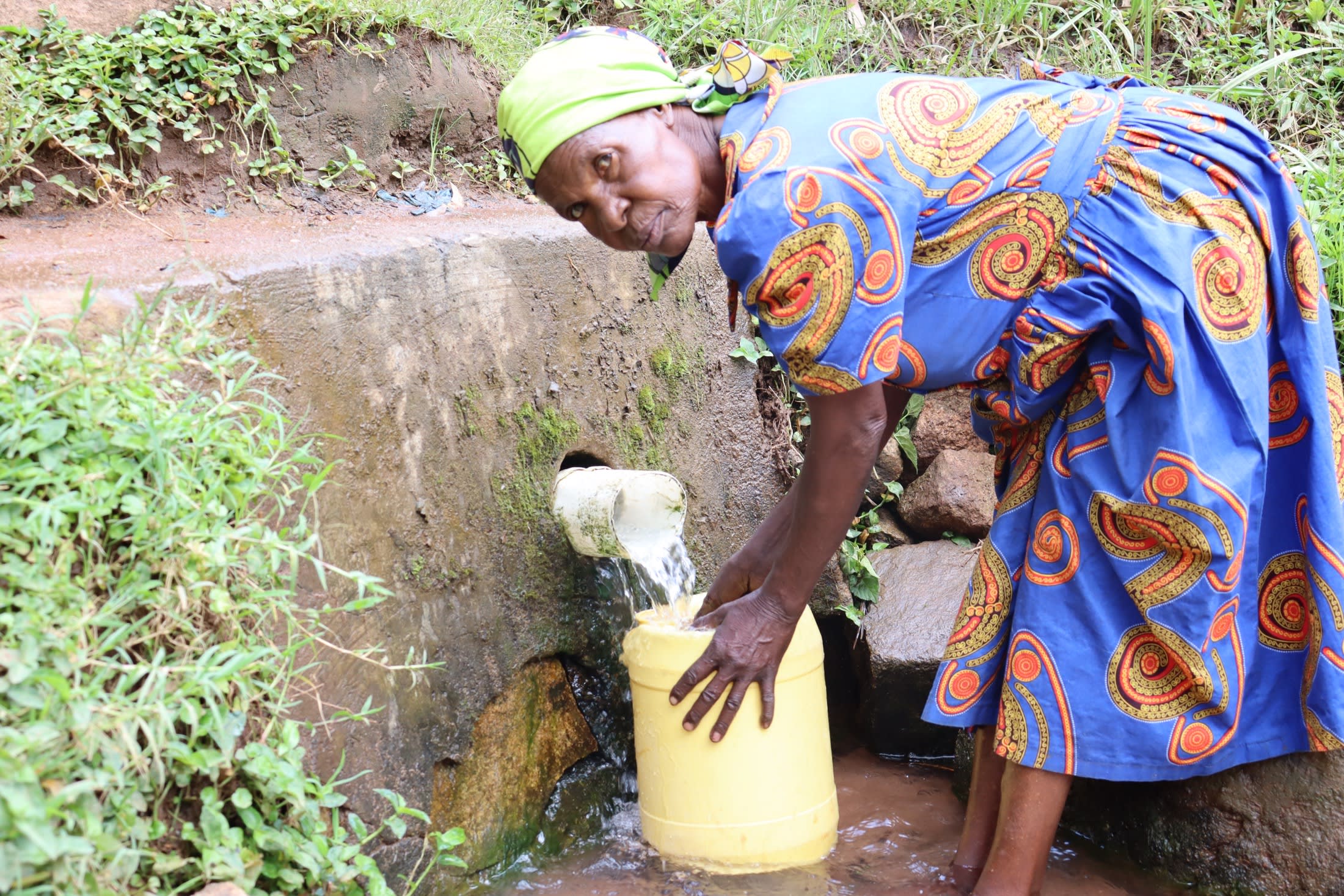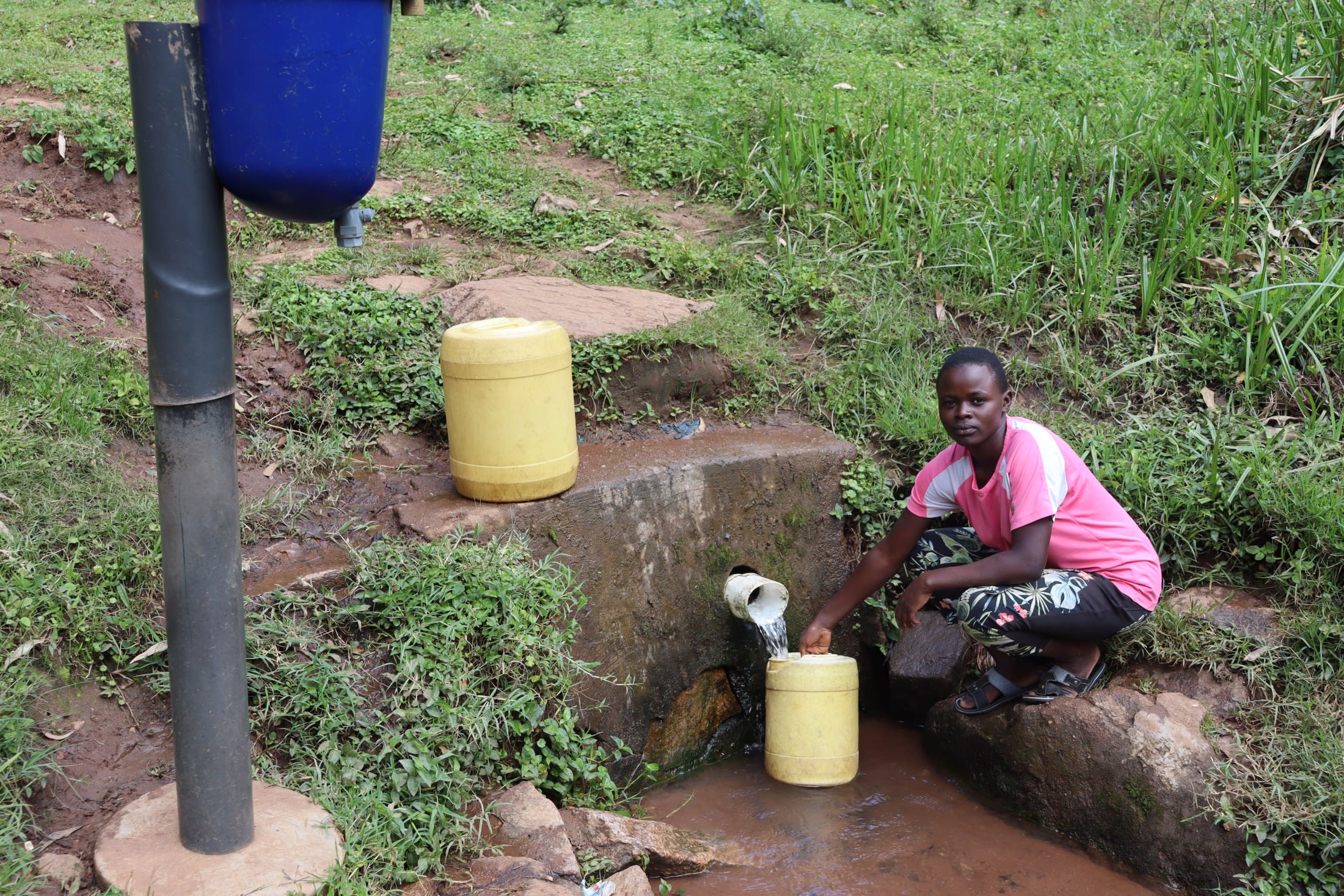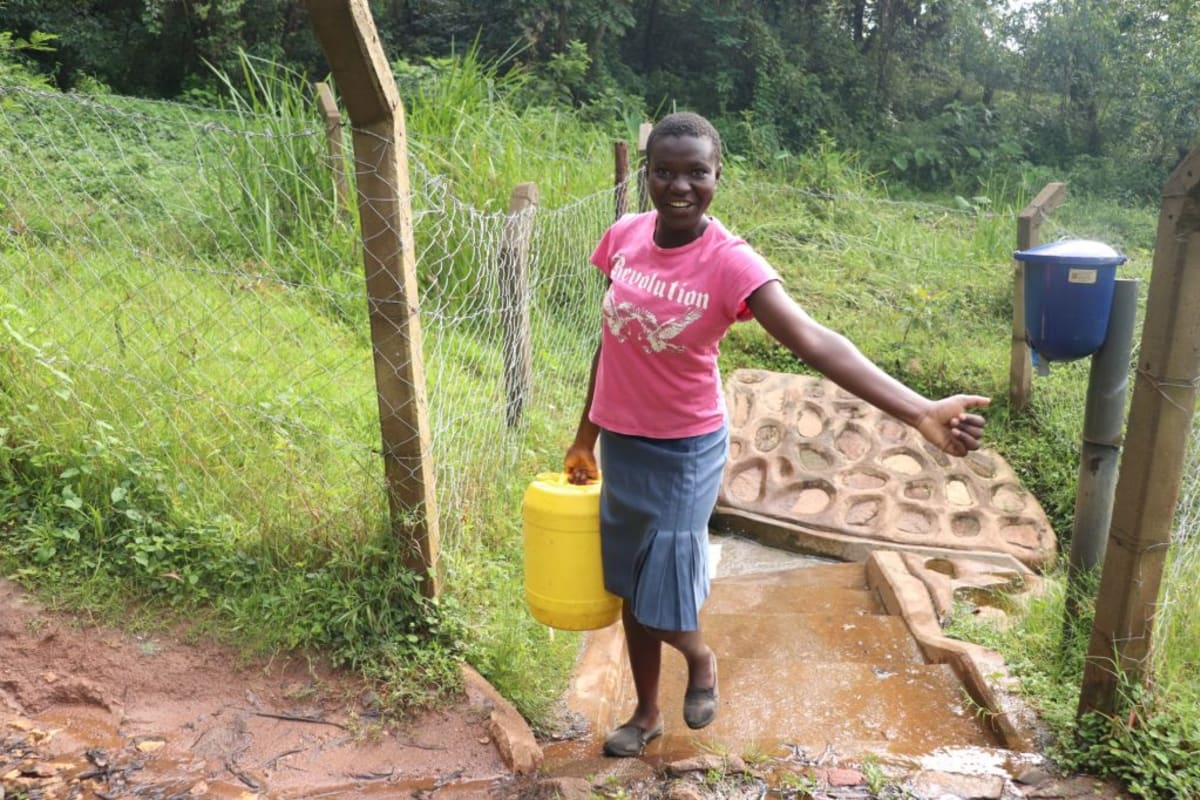"Clean, safe water is a basic human need," said our field officer Rachael Dorcas when sharing about the water situation in the community of Giminoi.
There are 210 people who rely on Midigo Spring to meet their daily water needs, and it is neither clean nor safe. Consuming it jeopardizes their health and well-being, including suffering from sore throats and contracting waterborne diseases like typhoid.
The only alternative water source is rainwater they can collect, but since the rains are seasonal, there is not enough water to collect and safely store to last throughout the year.
An attempt at spring protection was made in the past, but several key components are missing or damaged. And when looking at the spring, it is easy to see how the water would be contaminated.

The improvised plastic water spout that community members added does not fit the hole in the spring wall, where a collection pipe should be; instead, algae and dirt are prevalent all around it.
The spring box has a crack, and water oozes from the wall. Access to the collection area is a big challenge, especially for the elderly and pregnant women, as the stairs are damaged.

"The current state of this spring is bad. Six months ago, I got injured in the process of collecting water [as] I did slip at the staircase while carrying water and had to be rushed to the hospital to seek medical attention. In the course of me nursing my wounds, my business came crumbling down, and I had to close," said 70-year-old Eunice Anyange, shown above standing in water as she collects water.
These components slow water collection and lead to congestion and time wastage.
"Midigo Spring can be classified as a campsite for its beneficiaries. The spring is ever congested as it serves a large population. Visiting the spring at any time, you never fail to find jerrycans pilling with and without water," said Rachael.

"Getting to the spring, you find people crowded with jerrycans. I just get bored. One has to be patient and wait for his or her turn, then fetch. This has always interfered with my planning, greatly affecting my school performance," said 17-year-old Sylvia V., shown above collection water from the spring.
Reconstruction of the spring so we can adequately protect it will allow for the collection of clean water and for congestion to reduce, giving community members back their time and health.
What We Can Do:
Spring Protection
Protecting the spring will help provide access to cleaner and safer water and reduce the time people have to spend to fetch it. Construction will keep surface runoff and other contaminants out of the water. With the community's high involvement in the process, there should be a good sense of responsibility and ownership for the new clean water source.
Fetching water is a task predominantly carried out by women and young girls. Protecting the spring and offering training and support will, therefore, help empower the female members of the community by freeing up more of their time and energy to engage and invest in income-generating activities and their education.
Training on Health, Hygiene and More
To hold training, we work closely with both community leaders and the local government to approve small groups to attend training. We ask community leaders to invite a select yet representative group of people to attend training who will then act as ambassadors to the rest of the community to share what they learn.
The training will focus on improved hygiene, health, and sanitation habits in this community. With the community's input, we will identify key leverage points where they can alter their practices at the personal, household, and community levels to affect change. This training will help to ensure participants have the knowledge they need about healthy practices and their importance to make the most of their water point as soon as water is flowing.
Our team of facilitators will use a variety of methods to train community members. Some of these methods include participatory hygiene and sanitation transformation, asset-based community development, group discussions, handouts, and demonstrations at the spring.
One of the most important issues we plan to cover is the handling, storage, and treatment of water. Having a clean water source will be extremely helpful, but it is useless if water gets contaminated by the time it is consumed. We and the community strongly believe that all of these components will work together to improve living standards here, which will help to unlock the potential for these community members to live better, healthier lives.
We will then conduct a small series of follow-up trainings before transitioning to our regularly scheduled support visits throughout the year.
Training will result in the formation of a water user committee, elected by their peers, that will oversee the operations and maintenance of the spring. The committee will enforce proper behavior around the spring and delegate tasks that will help preserve the site, such as building a fence and digging proper drainage channels. The fence will keep out destructive animals and unwanted waste, and the drainage will keep the area's mosquito population at a minimum.

 Protected Spring
Protected Spring
 Rehabilitation Project
Rehabilitation Project




































